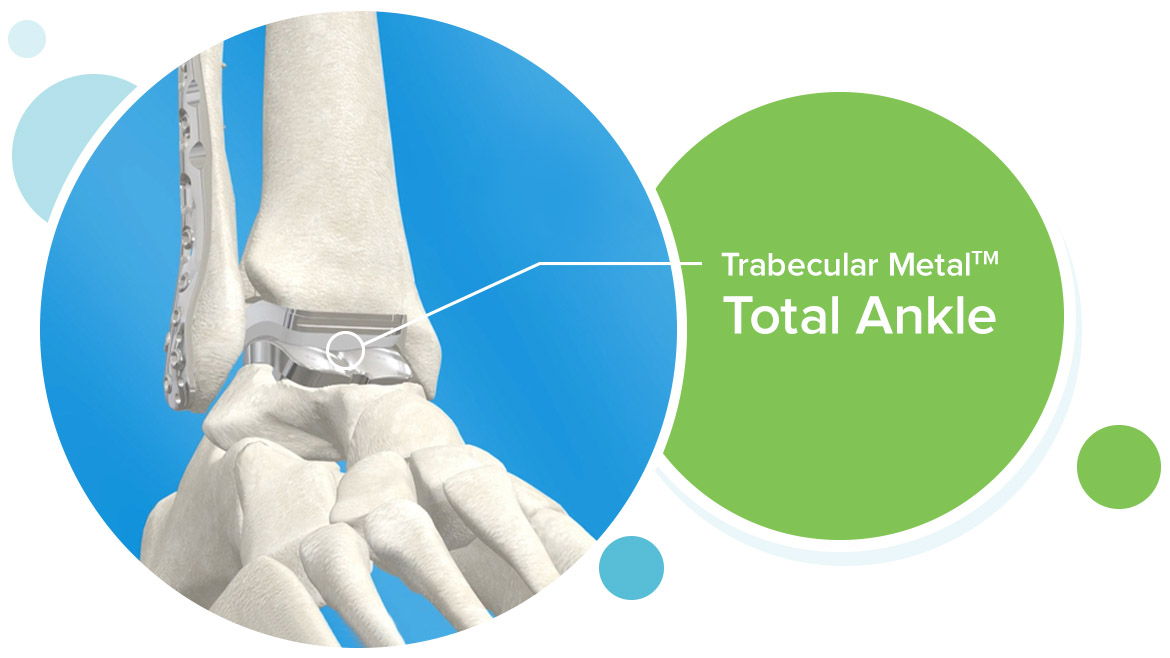What Is Ankle Arthritis?
Ankle arthritis is a clinical condition in which the joint that connects the foot to the leg, known as the tibiotalar or ankle joint, has damaged or worn out cartilage. Cartilage (the connective tissue found at the end of the bones in the joints) protects and cushions the bones during movement. When cartilage deteriorates or is lost, symptoms develop that can restrict one’s ability to easily perform daily activities.
Osteoarthritis is also known as degenerative arthritis, reflecting its nature to develop as part of the aging process. As the most common form of arthritis, osteoarthritis affects millions of Americans. Some people refer to osteoarthritis simply as arthritis, even though there are many different types of arthritis.
Causes
Osteoarthritis is considered a wear-and-tear disease because the cartilage in the joint wears down with repeated stress and use over time. As the cartilage deteriorates and gets thinner, the bones lose their protective covering and eventually may rub together, causing pain and inflammation of the joint.
An injury may also lead to osteoarthritis, although it may take months or years after the injury for the condition to develop. For example, falling off a ladder 15 years ago may have caused a chip in the cartilage which has progressively become bigger over time. In the ankle, osteoarthritis is usually caused by a fracture and occasionally by a severe sprain.
Symptoms
People with osteoarthritis in the foot or ankle experience, in varying degrees, one or more of the following:
- Pain and stiffness in the joint
- Swelling in or near the joint
- Difficulty walking or bending the joint
Some patients with osteoarthritis also develop a bone spur (a bony protrusion) at the affected joint.
Diagnosis
In diagnosing osteoarthritis, the foot and ankle surgeon will examine the foot and ankle thoroughly, looking for swelling in the joint, limited mobility, and pain with movement. X-rays may be ordered to evaluate the extent of the disease.
Nonsurgical Treatment
To help relieve symptoms, the surgeon may begin treating osteoarthritis with one or more of the following nonsurgical approaches:
Oral medications. Nonsteroidal anti-inflammatory drugs (NSAIDs), such as ibuprofen, are often helpful in reducing the inflammation and pain. Occasionally, a prescription for a steroid medication is needed to adequately reduce symptoms.
Orthotic devices. Custom orthotic devices (shoe inserts) are often prescribed to provide support to improve the foot’s mechanics or cushioning to help minimize pain.
Bracing. Bracing, which restricts motion and supports the joint, can reduce pain during walking and can help prevent further deformity.
Immobilization. Protecting the foot from movement by wearing a cast or removable cast-boot may be necessary to allow the inflammation to resolve.
Steroid injections. In some cases, steroid injections are applied to the affected joint to deliver anti-inflammatory medication.
Physical therapy. Exercises to strengthen the muscles, especially when osteoarthritis occurs in the ankle, may give the patient greater stability and may help him or her avoid injury that might worsen the condition.
When is Surgery Needed?
When osteoarthritis has progressed substantially or has failed to improve with nonsurgical treatment, surgery may be recommended. In advanced cases, surgery may be the only option. The goal of surgery is to decrease pain and improve function. At Northstate Foot and Ankle, we offer total ankle replacement as an option to keep your mobility pain-free!

Come see one of the doctors at Northstate Foot and Ankle Specialists to help diagnose and treat your Ankle Arthritis today!




